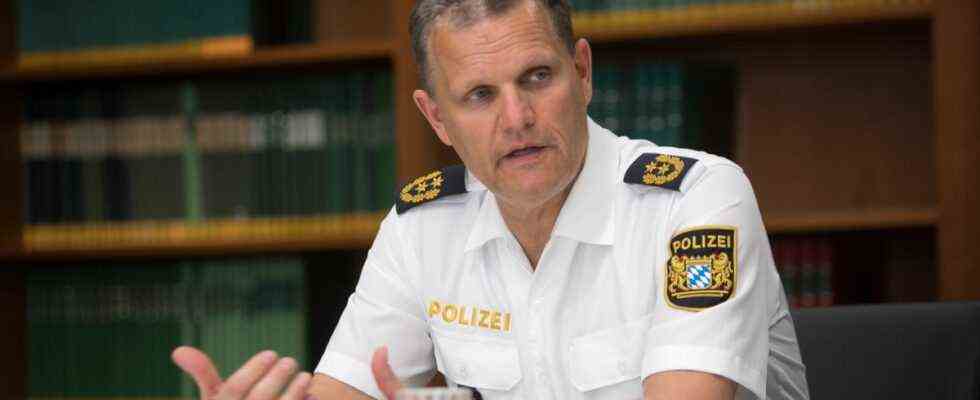At the Munich police headquarters, the analysis of the operation related to the IAA Mobility International Motor Show has only just begun, but despite all the criticism of various measures, the officers feel that their approach is basically confirmed. In any case, police spokesman Andreas Franken said that there were no serious crimes or attacks that had been announced from the left-wing extremist scene: “The actions that were feared were not carried out.” He also attributed this to the many controls and the massive police presence, which especially the IAA opponents camped on Theresienwiese felt intimidated by.
Before the start of the auto show, Bavaria’s Interior Minister Joachim Herrmann spoke of a “Europe-wide mobilization from the left-wing extremist and left-wing autonomous spectrum” and warned that part of this scene “does not shy away from violent actions”. The only known action from this direction was the smearing of a house that belongs to VW CEO Herbert Diess.
Police spokesman Franken explained that the camp on Theresienwiese was so heavily guarded by saying that left-wing autonomists who were prepared to use violence could have been there: “It is by no means the case that the scene is always dressed in black and clearly recognizable.”
The officers, who were quite martially equipped to protect against injuries and who also accompanied the demonstration trains from the camp to the city center, did not, however, fit in with the “tried and tested Munich line” announced by Police President Thomas Hampel when he presented the deployment concept. The “Munich Line” was developed as a result of the Schwabing riots in 1962, when the appearance of mounted police led to the escalation of rather harmless protests and culminated in street battles. After that, demonstrations should be accompanied by a less confrontational strategy.
But nothing of this was noticeable at the famous Munich Kessel in July 1992, when demonstrators against the G7 summit at Marienhof were surrounded by police units and detained for hours. “The Bavarian way of reaching it is a little harder,” said the then Prime Minister Max Streibl (CSU), explaining the approach as part of popular folklore. At the G7 demonstration in June 2015, when around 35,000 participants marched through the city in the sweltering heat and were supplied with drinkable items by police officers on the way – the motto was water cups instead of water cannons, the police proved that there is another way. For the operations management at the time, this was “proof that an organizer can help determine the course of events by clearly rejecting violence,” wrote the SZ at the time.
Admittedly, the IAA opponents at Theresienwiese had also agreed not to use violence, “but overcoming police barriers is also a form of violence,” says Andreas Franken. The police did not leave their Munich line in principle, he assured: “We were there, we were accessible, but the communication offer was not always accepted.”

